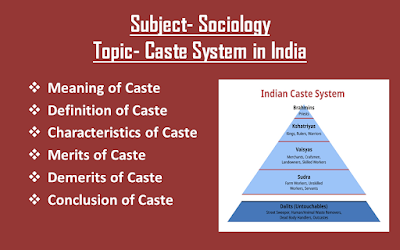Educational Institutions- Meaning, Definitions, Characteristics and Types
The term education has been derived from the Latin word ‘educare’ which means ‘to educate’, ‘to bring up’, ‘to raise’ or ‘to elevate’.
Educational institutions are organizations that provide structured learning environments for students to acquire knowledge, skills, and values.
These institutions can be formal, such as schools, colleges, and universities or informal, such as community centers, libraries, museums, online courses and platforms, etc.
# Definitions of Educational Institutions
1. According to Emile Durkheim:- "Institutions that transmit the collective knowledge and values of society, and shape individuals into competent members."
2. According to Max Weber:- "Organizations that provide specialized training and certification for social roles and positions."
3. According to Talcott Parsons:- "Institutions that socialize individuals into the dominant culture and prepare them for roles in society."
4. According to John Macionis:- "Social institutions that transmit knowledge, values, and skills to individuals, and prepare them for roles in society, while also reproducing and sometimes challenging social inequalities."
# Characteristics of Educational Institutions
1. Structured learning environment:- Educational institutions provide a structured and organized setting for learning.
2. Trained educators:- Teachers, instructors, or professors with expertise in their subjects lead the learning process.
3. Curriculum and syllabus:- Educational institutions follow a predetermined curriculum and syllabus to ensure comprehensive learning.
4. Assessment and evaluation:- Regular assessments and evaluations measure student progress and understanding.
5. Diverse student body:- Educational institutions bring together students from various backgrounds, cultures, and perspectives.
6. Support services:- Educational institutions offer support services like counseling, mentorship, and career guidance.
7. Socialization and community:- Educational institutions foster socialization, teamwork, and a sense of community among students.
8. Continuous improvement:- Educational institutions strive to improve teaching methods, curriculum, and facilities to enhance learning outcomes.
9. Focus on student development:- Educational institutions aim to develop students' intellectual, emotional, and social abilities.
10. Ancient concept:- Education is an ancient concept that has been prevailing in present societies. However, the aim of education in ancient India was different from the aim of education in India today.
# Types of Educational Institutions
A. Formal and Informal Education
1. Formal Education:- Formal education refers to a structured and organized learning process that takes place in established educational institutions, such as schools, colleges and universities. It follows a curriculum and syllabus, led by trained teachers or instructors, and focuses on academic and cognitive development, leading to recognized certifications, diplomas, or degrees.
2. Informal Education:- Informal education refers to the unstructured and spontaneous learning process that occurs outside of formal institutions, such as family, community and social environments. It is self-directed or led by peers, mentors, or family, and focuses on practical skills, values, and socialization, without leading to formal certifications or degrees.
B. Direct and indirect Education
1. Direct Education:- Direct education refers to a learning process where the learner receives instruction, guidance, and support directly from a teacher, instructor, or mentor. It involves face-to-face interaction, personalized attention, and immediate feedback. Examples of direct education are traditional classroom teaching, private tutoring, mentorship programs, coaching and training sessions and so on.
2. Indirect Education:- Indirect education refers to a learning process where students acquire knowledge and skills through intermediaries, such as textbooks, online courses, educational videos, and self-study materials, without direct face-to-face interaction with a teacher or instructor. Examples of indirect education are online courses, educational software and apps, video lectures and podcasts, e-books and digital textbooks and so on.
C. Individual and collective Education
1. Individual Education:- Individual education refers to a tailored and personalized learning approach that focuses on the unique needs, abilities, interests, and learning style of a single student. It is a student-centered approach that recognizes that each individual learns differently and at their own pace. It emphasizes personalized learning plans, one-on-one instruction and focus on individual strengths and weaknesses.
2. Collective Education:- Collective education refers to a learning approach that involves a group of individuals learning together, sharing experiences, and collaborating to achieve common educational goals. It emphasizes social learning, teamwork, and mutual support.
D. General and specific Education
1. General Education:- General education refers to the foundation of knowledge and skills that are considered essential for all individuals to possess, regardless of their future career or profession. It includes core courses and electives, liberal arts and sciences, basic skills and competencies and introductory courses in various disciplines.
2. Specific Education:- Specific education refers to specialized training or instruction that focuses on a particular field, profession, or skill set. It is designed to provide individuals with the knowledge, skills, and expertise required for a specific career, industry, or occupation. It includes vocational training, technical education, professional degree programs, specialized certifications and apprenticeships and on-the-job training.
Watch video on YouTube





